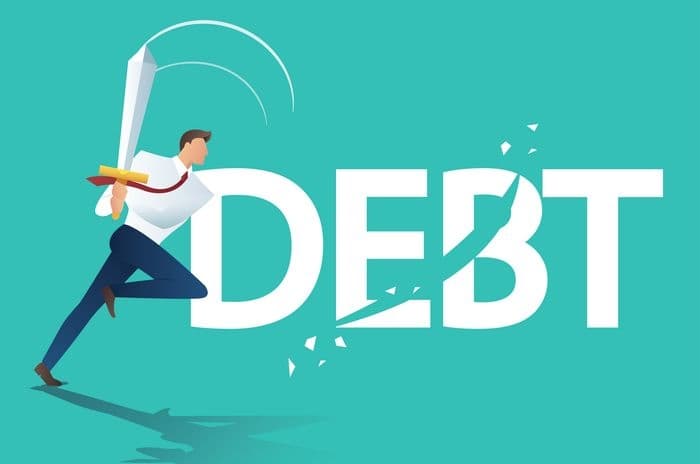Debt is a common problem that many people face in their lives. It can be overwhelming, and stressful, and can make you feel like you’re never going to be able to get out of it. I know this feeling all too well. At the age of 28, I found myself drowning in debt, with over $50,000 in credit card debt, student loans, and car payments.
I knew I needed to make a change in my life, and I made a commitment to pay off all my debt in one year. It was a challenging and emotional journey, but I’m proud to say that I achieved my goal. In this article, I will share with you my journey to financial freedom, including the tips, strategies, and mindset shift that helped me pay off $50,000 of debt in one year.

Understanding My Debt Situation: Where I was and Where I Wanted to Be
When I first realized the extent of my debt, I felt overwhelmed and hopeless. I had been living beyond my means, using credit cards to finance a lifestyle that I couldn’t afford. My student loans and car payments were adding to my financial burden, and I knew I needed to take action if I wanted to achieve financial freedom.
The first step in paying off my debt was to understand exactly where I stood. I created a spreadsheet that listed all of my debts, including the interest rates, minimum payments, and total balances. Seeing my debt in black and white was a wake-up call, but it also gave me a clear picture of where I needed to focus my efforts.
Creating a Financial Plan: Setting Goals and Budgeting
Once I had a clear understanding of my debt situation, I created a financial plan. I set a goal to pay off all of my debt in one year, which meant I needed to come up with a plan to pay off $50,000 in 12 months.
The first step in my financial plan was to create a budget. I tracked my expenses and income for a few months to get a sense of my spending habits. I then created a budget that allowed me to live within my means and put as much money as possible toward debt repayment.
Also read: Best Ways to Save Money
Implementing a Debt Repayment Strategy: Snowball vs. Avalanche Method
With my budget in place, I had to decide on a debt repayment strategy. I researched two popular methods: the snowball method and the avalanche method.
The snowball method involves paying off your smallest debt first, while making minimum payments on your larger debts. Once your smallest debt is paid off, you take the money you were paying toward that debt and apply it to your next smallest debt. This method gives you a quick win and can help you stay motivated.
The avalanche method involves paying off your debt with the highest interest rate first, while making minimum payments on your other debts. This method can save you money on interest in the long run, but it can take longer to see progress.
I decided to use a combination of both methods. I started with the snowball method, paying off my smallest debt first, which gave me a quick win and motivated me to keep going. Then, I switched to the avalanche method and focused on paying off my debt with the highest interest rate. I continued to make minimum payments on my other debts, but put as much money as I could toward my highest interest debt.
Lifestyle Changes: Cutting Back and Sacrifices
In order to achieve my goal of paying off $50,000 of debt in one year, I had to make some lifestyle changes. I cut back on unnecessary expenses, like eating out and shopping, and made sacrifices, like cancelling my gym membership and finding cheaper forms of entertainment.
I also looked for ways to increase my income. I picked up extra shifts at work and sold items I no longer needed. Every extra dollar I earned went toward my debt repayment.
Mindset Shift: Changing My Relationship with Money
One of the most important parts of my debt repayment journey was changing my relationship with money. I realized that I had been using money to make myself feel better, buying things I didn’t need and couldn’t afford. I had to shift my mindset from instant gratification to long-term financial stability.
I started focusing on the things that truly mattered to me, like spending time with loved ones and pursuing my hobbies. I found ways to enjoy life without spending money, like going for walks and having picnics in the park.
FAQs: Answering Common Questions About Paying Off Debt
Q: Is it possible to pay off $50,000 of debt in one year?
A: Yes, it’s possible, but it takes dedication, hard work, and sacrifice.
Q: Which debt repayment strategy is better: snowball or avalanche?
A: It depends on your personal situation. The snowball method can give you quick wins and keep you motivated, while the avalanche method can save you money on interest in the long run.
Q: How do I stay motivated when paying off debt?
A: Celebrate your progress, find a support system, and remind yourself of your long-term goals.
Conclusion: My Journey to Financial Freedom and Lessons Learned
Paying off $50,000 of debt in one year was not easy, but it was worth it. I learned a lot about budgeting, debt repayment strategies, and the importance of changing my mindset when it comes to money.
If you’re struggling with debt, know that you’re not alone. It’s never too late to start taking control of your finances and working toward financial freedom. Remember, it takes dedication and hard work, but the payoff is worth it in the end.